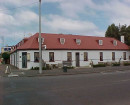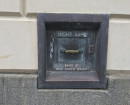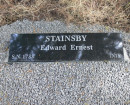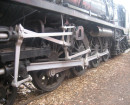Back to search results
EUREKA HISTORIC PRECINCT
501-525 EUREKA STREET EUREKA, BALLARAT CITY
EUREKA HISTORIC PRECINCT
501-525 EUREKA STREET EUREKA, BALLARAT CITY
All information on this page is maintained by Heritage Victoria.
Click below for their website and contact details.
Victorian Heritage Register
-
Add to tour
You must log in to do that.
-
Share
-
Shortlist place
You must log in to do that.
- Download report

EUREKA HISTORIC PRECINCT SOHE 2008


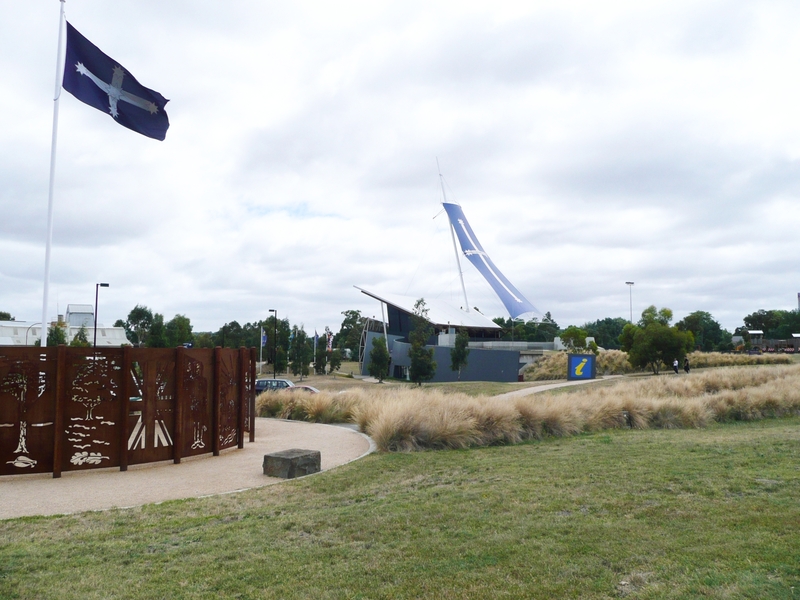

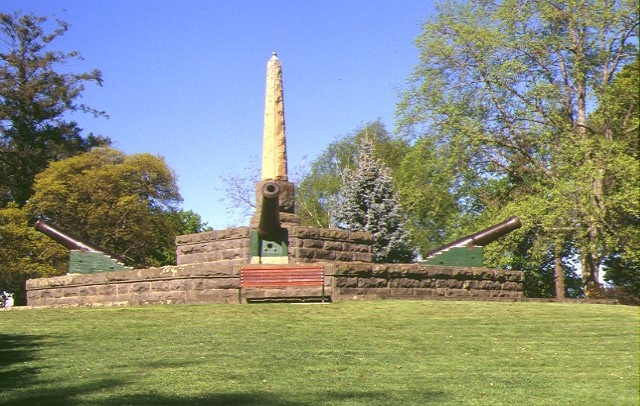


On this page:
Statement of Significance
What is significant?
The Eureka rebellion was a brief demonstration of armed conflict against injustice, its events have a special association with the Australian community and have been bestowed with tremendous emotional value. Factors leading to the rebellion included the hated gold digging licence fee and the unjust administration system used by the Colonial Government to control the goldfield population.
The Eureka rebellion is a defining and shaping event in the nation's history. Its shock waves had a great impact on the society of the day helping to carry and sustain drives for constitutional reform, such as manhood suffrage and vote by secret ballot. Eureka was also directly responsible for a government policy shift on the land question, making it easier for ordinary working class people to acquire land for farming and other purposes. Importantly for the development of an Australian character, the uprising quickly took on heroic and legendary status and is now the Australian symbol for people striving for a 'fair go'.
After the rebellion, the Eureka battlefield returned to its 'normal' use: gold mining and habitation. A significant and enduring issue in respect to the place post-battle has been the identification of the exact location of the Stockade. The first official attempt to do so occurred in 1869 when the Town Clerk of the Ballarat East Town Council identified an area of 12 acres and 2 roods. Originally called the Eureka Street Stockade Reserve, the land was described by Henry Morres in 1870 as containing the greater portion if not the whole of the stockade.
The Eureka Street Stockade Reserve (officially gazetted as the Eureka Park and Gardens in 1885 and now known as Eureka Stockade Reserve) developed gradually. The Reserve's main development period was from 1912 to 1964. This involved the extension of the boundaries of the Reserve and physical developments such as a rotunda, two lakes, a nursery, tree plantings, formal gardens and paths, drinking fountain, small and large halls, memorial gates, Lake Elsworth Swimming Pool, and a Caravan Park. Today the Reserve bears little resemblance to its original character.
The most notable attempt to locate the exact site of the Stockade was in 1884 when a commemorative monument was proposed for the reserve. Several hundred old timers gathered at Eureka Street on 26 June 1884 and after heated debate they agreed to disagree and voted on a site in the south east corner of the reserve. The monument began its life as 'an octogard body of bluestone ashlar work in two tiers' with four 64-pounder guns: later a twenty-foot tall stone plinth was added.
Academic endeavours over the last thirty years have so far placed the likely location of the stockade within the blocks bounded by Belford, George, Charlesworth, Stawell and Eureka streets. Some have championed the bipartisan spot selected in 1884; others have put the Stockade varying distance to the west of the monument. Factors cited as working against any resolution are the contradictory historical accounts of the battle, the physical transformation of the topography since 1854 and the ephemeral nature of the Stockade (the possibility of any sub-surface features surviving is low).
How is it significant?
The Eureka Historic Precinct is of historical, cultural and archaeological significance to the State of Victoria.
Why is it significant?
The Eureka Historic Precinct is of outstanding historical significance because of its association with the Eureka stockade, the battleground, and an event that is part of our national experience. The bulk of the land comprising the precinct was set aside as a reserve only 16 years after the battle because it was considered to contain the greater portion, if not the whole, of the stockade. Since then it has been a place to reflect on the events and their consequences.
The Eureka Historic Precinct is arguably one of the most culturally meaningful sites in the nation. The Eureka rebellion holds an unparalleled position in the nation's history and is ingrained in Australia's cultural fabric. The legend of Eureka has also been immortalised in poetry, prose, film and painting. The 'Eureka spirit' is commonly invoked as a synonym for democracy, Australian-style, with the Eureka (or Southern Cross) flag as the symbol of that spirit. The land, any potential archaeological deposits and relics and all commemorative elements that facilitate quiet reflection or trigger the imagination are all crucial to the significance to the place. The prime above ground elements are the Eureka Monument, Drinking Fountain, Memorial Gates, and Eureka Interpretive Centre.
The Eureka Stockade Monument is of historical significance because it has been recognised as a memorial to the Eureka Stockade since 1884. The site was selected through a bipartisan community vote. The monument's significance is enhanced by it being one of the earliest substantial commemorative structures erected in Victoria and for being a focal point for anniversaries, ceremonies and protests up to the present day.
The Eureka Historic Precinct has very important archaeological significance due to the possibility of buried deposits or artefacts associated with the battle and the people who took part. The early reservation of the land as a park has protected it from urban development. Crucial to the sub-surface significance is the course of the Eureka Lead itself, which gave shape to mining activity and settlement in the vicinity and which is a key pointer to the battle scene.
The Eureka rebellion was a brief demonstration of armed conflict against injustice, its events have a special association with the Australian community and have been bestowed with tremendous emotional value. Factors leading to the rebellion included the hated gold digging licence fee and the unjust administration system used by the Colonial Government to control the goldfield population.
The Eureka rebellion is a defining and shaping event in the nation's history. Its shock waves had a great impact on the society of the day helping to carry and sustain drives for constitutional reform, such as manhood suffrage and vote by secret ballot. Eureka was also directly responsible for a government policy shift on the land question, making it easier for ordinary working class people to acquire land for farming and other purposes. Importantly for the development of an Australian character, the uprising quickly took on heroic and legendary status and is now the Australian symbol for people striving for a 'fair go'.
After the rebellion, the Eureka battlefield returned to its 'normal' use: gold mining and habitation. A significant and enduring issue in respect to the place post-battle has been the identification of the exact location of the Stockade. The first official attempt to do so occurred in 1869 when the Town Clerk of the Ballarat East Town Council identified an area of 12 acres and 2 roods. Originally called the Eureka Street Stockade Reserve, the land was described by Henry Morres in 1870 as containing the greater portion if not the whole of the stockade.
The Eureka Street Stockade Reserve (officially gazetted as the Eureka Park and Gardens in 1885 and now known as Eureka Stockade Reserve) developed gradually. The Reserve's main development period was from 1912 to 1964. This involved the extension of the boundaries of the Reserve and physical developments such as a rotunda, two lakes, a nursery, tree plantings, formal gardens and paths, drinking fountain, small and large halls, memorial gates, Lake Elsworth Swimming Pool, and a Caravan Park. Today the Reserve bears little resemblance to its original character.
The most notable attempt to locate the exact site of the Stockade was in 1884 when a commemorative monument was proposed for the reserve. Several hundred old timers gathered at Eureka Street on 26 June 1884 and after heated debate they agreed to disagree and voted on a site in the south east corner of the reserve. The monument began its life as 'an octogard body of bluestone ashlar work in two tiers' with four 64-pounder guns: later a twenty-foot tall stone plinth was added.
Academic endeavours over the last thirty years have so far placed the likely location of the stockade within the blocks bounded by Belford, George, Charlesworth, Stawell and Eureka streets. Some have championed the bipartisan spot selected in 1884; others have put the Stockade varying distance to the west of the monument. Factors cited as working against any resolution are the contradictory historical accounts of the battle, the physical transformation of the topography since 1854 and the ephemeral nature of the Stockade (the possibility of any sub-surface features surviving is low).
How is it significant?
The Eureka Historic Precinct is of historical, cultural and archaeological significance to the State of Victoria.
Why is it significant?
The Eureka Historic Precinct is of outstanding historical significance because of its association with the Eureka stockade, the battleground, and an event that is part of our national experience. The bulk of the land comprising the precinct was set aside as a reserve only 16 years after the battle because it was considered to contain the greater portion, if not the whole, of the stockade. Since then it has been a place to reflect on the events and their consequences.
The Eureka Historic Precinct is arguably one of the most culturally meaningful sites in the nation. The Eureka rebellion holds an unparalleled position in the nation's history and is ingrained in Australia's cultural fabric. The legend of Eureka has also been immortalised in poetry, prose, film and painting. The 'Eureka spirit' is commonly invoked as a synonym for democracy, Australian-style, with the Eureka (or Southern Cross) flag as the symbol of that spirit. The land, any potential archaeological deposits and relics and all commemorative elements that facilitate quiet reflection or trigger the imagination are all crucial to the significance to the place. The prime above ground elements are the Eureka Monument, Drinking Fountain, Memorial Gates, and Eureka Interpretive Centre.
The Eureka Stockade Monument is of historical significance because it has been recognised as a memorial to the Eureka Stockade since 1884. The site was selected through a bipartisan community vote. The monument's significance is enhanced by it being one of the earliest substantial commemorative structures erected in Victoria and for being a focal point for anniversaries, ceremonies and protests up to the present day.
The Eureka Historic Precinct has very important archaeological significance due to the possibility of buried deposits or artefacts associated with the battle and the people who took part. The early reservation of the land as a park has protected it from urban development. Crucial to the sub-surface significance is the course of the Eureka Lead itself, which gave shape to mining activity and settlement in the vicinity and which is a key pointer to the battle scene.
Show more
Show less
-
-
EUREKA HISTORIC PRECINCT - Plaque Citation
On 3 December 1854 the legendary uprising of local gold miners against the colonial government took place at the stockade erected in this vicinity. This historic event was commemorated by the setting aside of this reserve in 1869.
EUREKA HISTORIC PRECINCT - Permit Exemptions
General Exemptions:General exemptions apply to all places and objects included in the Victorian Heritage Register (VHR). General exemptions have been designed to allow everyday activities, maintenance and changes to your property, which don’t harm its cultural heritage significance, to proceed without the need to obtain approvals under the Heritage Act 2017.Places of worship: In some circumstances, you can alter a place of worship to accommodate religious practices without a permit, but you must notify the Executive Director of Heritage Victoria before you start the works or activities at least 20 business days before the works or activities are to commence.Subdivision/consolidation: Permit exemptions exist for some subdivisions and consolidations. If the subdivision or consolidation is in accordance with a planning permit granted under Part 4 of the Planning and Environment Act 1987 and the application for the planning permit was referred to the Executive Director of Heritage Victoria as a determining referral authority, a permit is not required.Specific exemptions may also apply to your registered place or object. If applicable, these are listed below. Specific exemptions are tailored to the conservation and management needs of an individual registered place or object and set out works and activities that are exempt from the requirements of a permit. Specific exemptions prevail if they conflict with general exemptions. Find out more about heritage permit exemptions here.Specific Exemptions:General Conditions:
1. All exempted alterations are to be planned and carried out in a manner which prevents damage to the fabric of the registered place or object.
2. Should it become apparent during further inspection or the carrying out of alterations that original or previously hidden or inaccessible details of the place or object are revealed which relate to the significance of the place or object, then the exemption covering such alteration shall cease and the Executive Director shall be notified as soon as possible.
3. If there is a conservation policy and plan approved by the Executive Director, all works shall be in accordance with it.
4. Nothing in this declaration prevents the Executive Director from amending or rescinding all or any of the permit exemptions.
5. Nothing in this declaration exempts owners or their agents from the responsibility to seek relevant planning or building permits from the responsible authority where applicable.
Registered Structures
* minor repairs and maintenance to the registered structures which replace like with like. (Major ‘whole of structure’ repair works are not permit exempt.)
Non-registered structures
* external and internal alterations to non-registered permanent structures on the site such as the hall, the site interpretation centre, the house, the glass house, the pool buildings and structures, the permanent buildings at the caravan park, provided that the works do not increase the floor area of any of these structures. (Development works which cause permanent expansion of floor areas and the need for any foundations are not considered to be permit exempt)
* placement of caravans and mobile homes in a non-permanent manner.
Demolition and Removals
* removal of any of the non registered structures within the registered land such as all fences, the diorama, the hall, the pool and associated buildings and structures, the house, internal roadways, (provided that the foundations are dug up only with archaeological supervision).
Gardening
* Gardening and maintenance of trees.
Public Furniture
* installation of rubbish bins, seating, playground equipment, bicycle racks and small items. (Installation of large barbeques and drinking water fountains and the like which require foundations and/or service supply trenching is not permit exempt.)
Signage
* signage which complies with the City of Ballarat Planning SchemeEUREKA HISTORIC PRECINCT - Permit Exemption Policy
The site has great historical and archaeological importance.
At the time of the historical event, the site had been cleared, excavated, mined and lightly settled. Since then the topography has been filled, subdivided, roads formed, structures built, landscape trees and shrubs planted and populated by permanent and non-permanent structures.
The archaeological evidence of gold exploration remains in part.
In order to preserve the site 3 major actions are required viz:
a. preservation of the archaeological record,
b. preservation and continued interpretation of the known area.
c. Removal of structures not specifically associated with the historic event which the site commemorates.
In order to achieve these goals the following actions require a permit which will give rise to archaeological monitoring and wherever possible the limiting of the impact of the proposed works :
*Any works which require foundations and trenching will be subject to a permit. This includes works to provide site services (gas / water /telephone /electricity etc) or new trees and structures.
*New developments on the site (eg shelter sheds) will not be permit exempt.
*Nothing in the exemption alleviates responsibility for obtaining all other necessary permits (eg Planning Permits under the City of Ballarat Planning Scheme)
-
-
-
-
-
OLD CURIOSITY SHOP
 Victorian Heritage Register H1982
Victorian Heritage Register H1982 -
FORMER FEMALE REFUGE COMPLEX
 Victorian Heritage Register H1893
Victorian Heritage Register H1893 -
EUREKA FLAG
 Victorian Heritage Register H2097
Victorian Heritage Register H2097
-
'NORWAY'
 Boroondara City
Boroondara City -
1 Mitchell Street
 Yarra City
Yarra City
-







